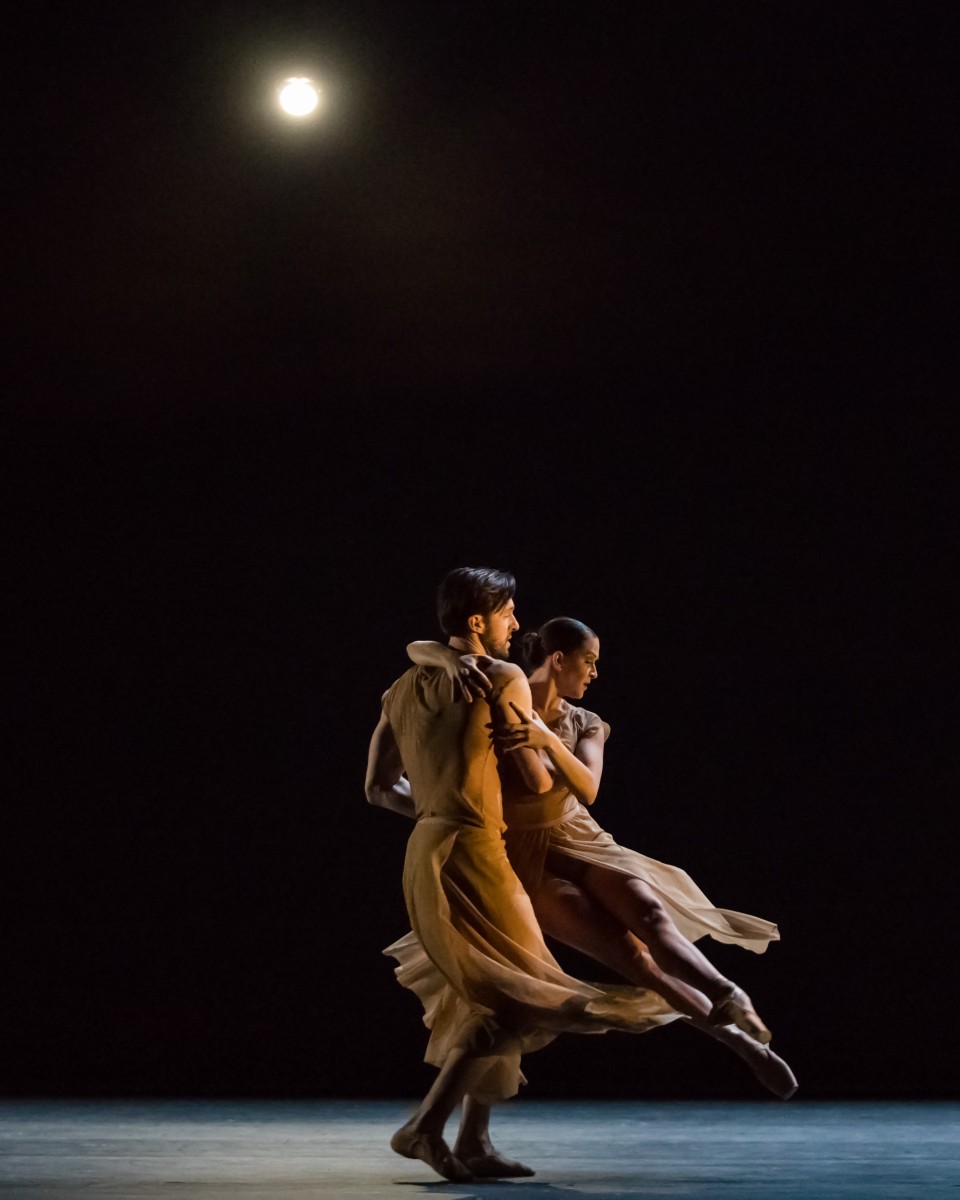
Ballet Idaho Principal Artist Adrienne Kerr and Soloist Artist Justin Hughes in Craig Davidson’s Ghost(Light). Photo by Otto Kitsinger.
Prelude: A Look Inside The Inspirations of Matt Miller’s Lighting Design for Ballet Idaho’s Ghost(Light)
Copyright of Ballet Idaho. Excerpts of Ballet Idaho’s Ghost(Light). Choreography by Craig Davidson. Lighting by Matt Miller. Costume by Reid & Harriett. Film by FrontRunner Films. Music by Phillip Glass and Anna Clyne.
Ghost(Light) had an unusual journey in that it didn’t end up on the stage for its premiere as had been intended. In February of 2020 Ghost(Light) was preparing to go into dress rehearsal when the Idaho state government began announcing Covid-related shutdowns and closures for the first time. Ballet Idaho however was able to act quickly and collaborate with FrontRunner Films to film dress rehearsal that one last final night before everything went dark.
Thank you so much for talking with us today Craig. Can you start by telling us a little bit about yourself and what even brought you to lighting design in the first place?
Matt Miller: I grew up in a house that supported the arts. My folks were opera singers that then became educators and administrators in the fine arts, so I grew up around music and acting and all that. I played saxophone in a jazz band and played in the drumline, so music and art were always a part of my upbringing.
I find that the longer I do this, the more people I see that had a similar door into an arts career, even for those on the marketing or administrative side. Being exposed to the arts early on is huge, and that’s honestly probably what put me in here.
I knew I wanted to do theater, and I had heard about the Steppenwolf Theatre Company. So I went to the University of Nebraska-Lincoln, Hixson-Lied College of Fine and Performing Arts, Johnny Carson School of Theatre & Film.
I essentially got two theater degrees and figured out that I wanted to be in the design technical field. Then, I sort of stumbled into a couple of dance contacts in Chicago, and into a job as a production coordinator at Hubbard Street Dance Chicago which was just beginning its tenure with Glenn Edgerton as the Artistic Director. I spent about a decade working with Hubbard Street and then touring contemporary dance. I didn’t know anything about dance until I started at Hubbard Street, so I got a really good dance education from that. I think I designed somewhere around 33 pieces for them while I was there.
After that, I struck out on my own and went touring with Alonzo Kings LINES Ballet, Jessica Lang Dance, Malpaso Dance Company, and a handful of other folks.
Do you think that designing lighting for dance is different than designing for, let’s say, theater or other live performance scenarios?
MM: Yes. The dirty secret about the design industry is that everyone wants to do Broadway. And Broadway is, with absolutely no statistics to back this up, I would say a mere 15% of the industry. Yet it’s 100% of the education you’re given when getting a design degree. So a lot of folks get that training and then, as I did, stumble into dance or music, or end up working in a shop, or corporate work, realizing that there’s a much wider world than they knew in school.
In general, dance ends up being sort of halfway to concert touring and halfway to the redheaded stepchild of theater, because it’s an art form that really begs for lighting. Which is why I love it! In other situations you have to come to the table and say, “no, no, no lighting is important and I’m going to help make this a much better show or event or concert…”, and in dance, you don’t have to convince anyone of that.
Everyone already knows that lighting’s gonna be really important to this. And while it is great for our egos, it also means that we have a lot of space to play in. In a more practical sense, if you are lighting a straight play, Shakespeare let’s say, speaking is important. For that you have to see the person’s face. You have to see their lips move in order to understand the text.
Dance, the language, is not an actual language. The language is their bodies. So there’s a lot less constraint. You don’t have to light any one particular thing. You have the freedom to light their entire bodies and the environment around their bodies. For me it’s fun because there are many more places you can go than you can in film, TV, or theater.
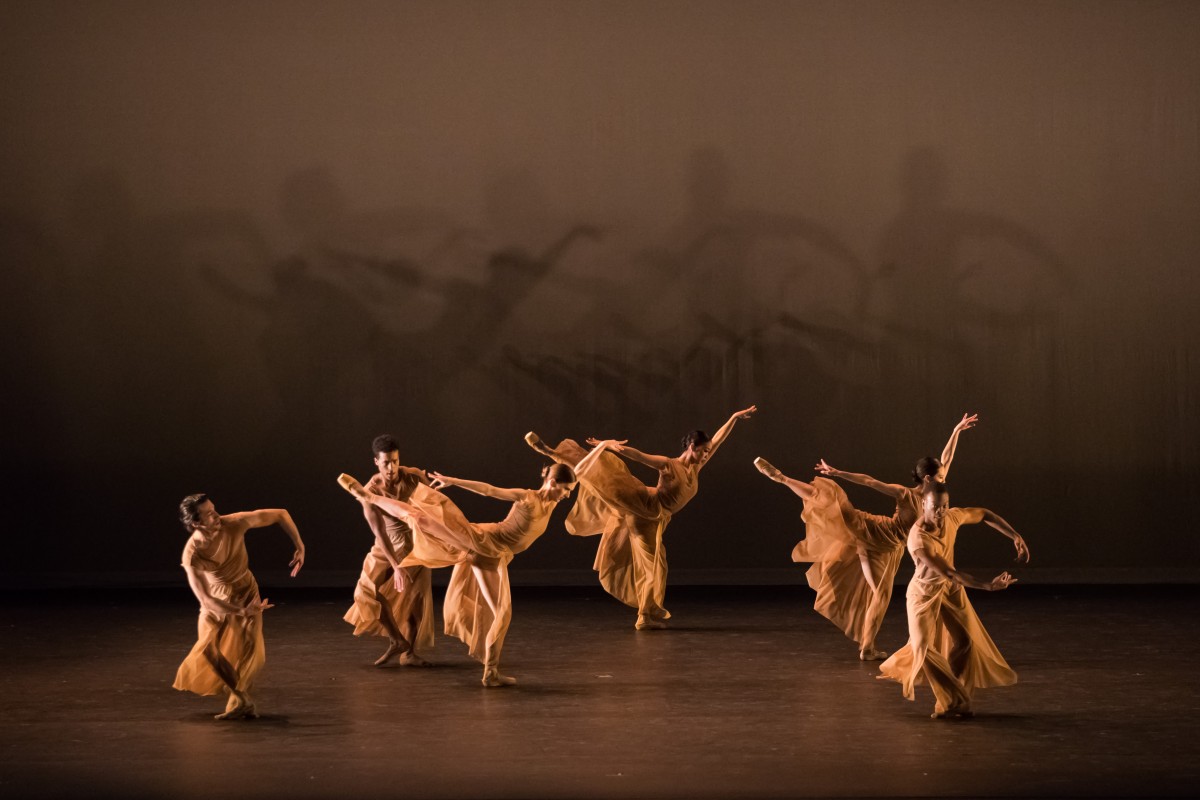
Ballet Idaho dancers in Ghost(Light). Photo by Otto Kitsinger.
When you begin designing for a new work, what is one of your initial steps of inspiration? Is it the music, the notes from the choreographer, or do you have a story in your mind?
MM: Good question. Yes is the answer. It honestly depends on who I’m working with. With a choreographer like Craig, my way into a piece is typically music. That’s where the color and form come from. Craig came in and said, “this is the music we’re using. This is a timestamp outline of how we’re starting with a duet, and then going into a quartet, and then into a group section, and then there’s a men’s trio and then we have a women’s trio….” And with that I sort of had an outline, similar to how in a play or a musical you have a script, or in a concert you have the setlist. In a dance piece you have the steps, but sometimes they’re not there until the week before the theater.
So with someone who’s as prepared as Craig, it’s much easier to attach a serious visual concept to the piece because he already knows where he is going.
You and Craig had a uniquely collaborative process when creating Ghost(Light). Since the piece was thematically centered around light, it opened up the space for you to be able to work more closely together. Can you tell us a little bit about what that co-creation process was like?
MM: Craig’s one of my favorites. It’s not just because he’s a good choreographer, but also because he values what I do and has a great imagination for it. Ghost(Light) is one of those pieces that could not have happened if we hadn’t already worked together a couple of times previously.
[By the time we came to Ghost(Light)], he knew that if he came to me with a piece that was centered around the concept of light or a heavy use of shadow, that I could handle it. He already had this idea in his head and I was just the right designer at the right time. And likewise, I knew that we could do something of that scale at the Morrison Center with Ballet Idaho because I knew that they could handle it.
Craig had this clear idea, but he didn’t know where to go. So we started looking at pictures of actual ghost lights in theaters, which is a super easy Instagram win. It’s a single source with long shadows, and the place is kind of creepy because the stairs from the random rehearsal place are in the corner, and there’s a lot of dust, and theaters have this folklore about old spirits… it all fit in really well with his concept. We knew what music we were using – Philip Glass and Anna Clyne are phenomenal composers – so I had some really clear images from that. I made some renderings for him, and by the time we got into the theater we didn’t have to discover anything. We just needed to make sure that what we wanted was going to work because we already had a table of contents we just had to hit on the way down.
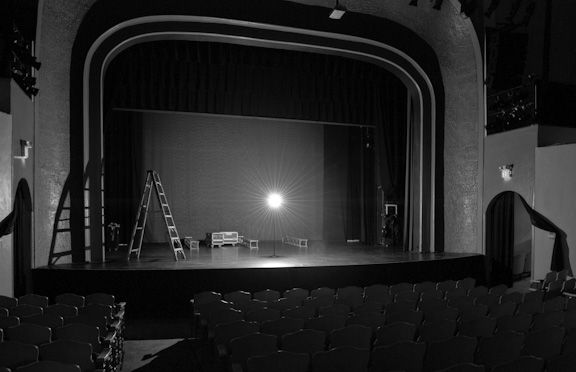
Inspiration image for Ghost(Light) curated by Matt Miller.
Can you describe a couple of those “table of content” moments?
MM: One of the first ones that came up is a trio that happens downstage left early on in the piece. That moment really illustrated Craig’s inner imagination about the piece.
There’s a light that we place downstage right and the trio’s happening sort of downstage left, and the angles are just right so their shadows are projected on this white drop behind them. The music is sort of creepy. There’s a lot of limbs and poses and they’ll do a movement, then they’ll stop, and they’ll do another movement, and then they’ll stop. It starts to show the audience what this piece is about, almost establishing a visual vocabulary for the piece.


The rendering and the result.
Rendering by Matt Miller. Photo featuring Ballet Idaho Principal Andrew Taft and Soloists Daniel Ojeda and Kate Maxted in Craig Davidson’s Ghost(Light).
Photo by Otto Kitsinger.
MM: Another moment that I really loved was a section with just the women. The music feels like it’s almost falling from the night sky in this really beautiful way. It’s these runs that are going down the scale, starting at different times. Almost like raindrops on a window pane. It made me think of a constellation of stars. So we did this wonderful rail move with a number of pieces of steel pipe and a general wash light. The bars have different positions and that’s how we achieved all of these different backgrounds, and in that moment they descend from the heavens at different times in varying speeds and end up in what we called “the constellation moment.” it looks like it could be stars. And, the timing with the music and the way that they came in, it was just… it was just spot on for me. It is just exactly what I wanted the music to look like. We got lucky with that.
Watch the stars fall into place here: https://www.instagram.com/reel/CZdKepQBxjm/
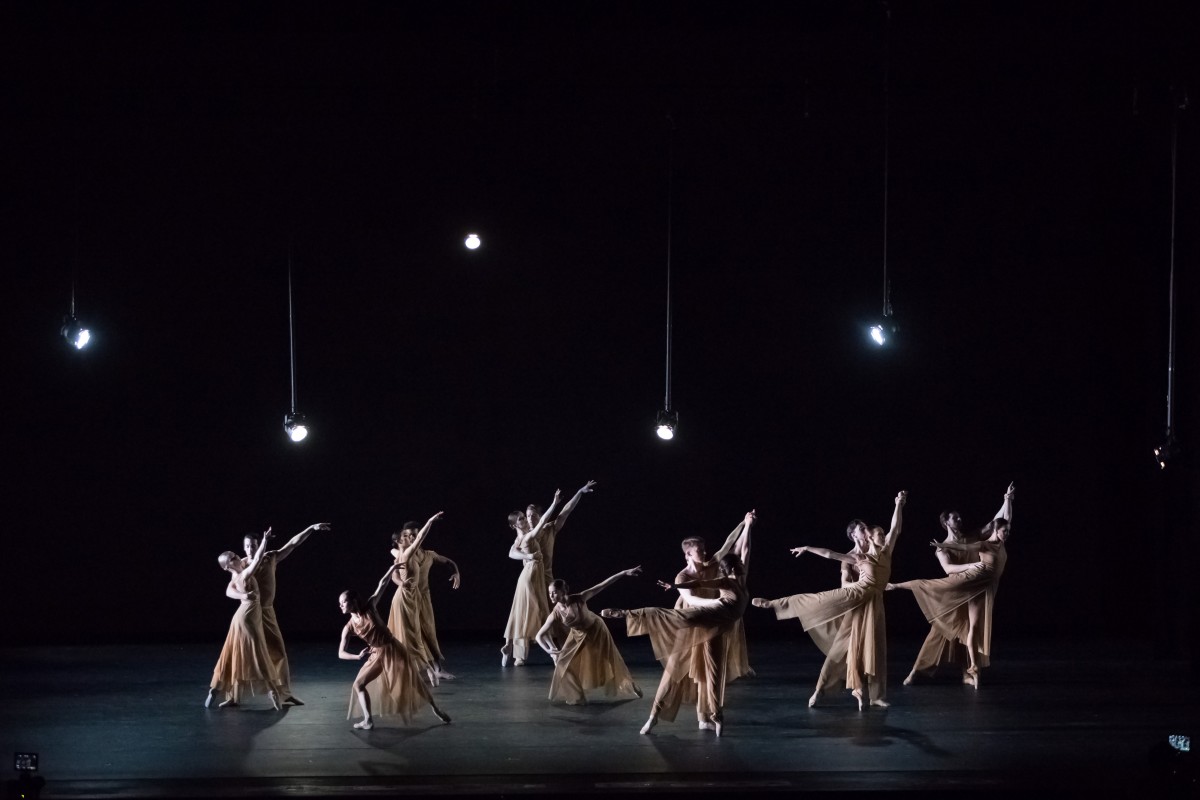
A constellation of stars featuring Ballet Idaho dancers in Craig Davidson’s Ghost(Light). Photo by Otto Kitsinger.
Ghost(Light)’s premiere was not as anticipated due to Covid, and so you saw your piece first in a very empty theater with just some cameras. Then a few weeks later, you saw streamed online. How did your lighting translate from your original vision to the screen, and then how did it feel when we went back to the theater to finally perform it in front of a live audience about a year later?
MM: It was eerie to have a piece about the light in the theater that you put on when it’s empty and then, you know, everything happened. The entire world shut down.
We thought we could get this one last show under the wire. I guess we didn’t. And then I was completely surprised when they said they’re going to film it. My first thought was, oh no, I didn’t like this for camera. I do a lot of lighting for camera, but now I’m not even going to have a reference monitor. I didn’t bring my light meter. Like, what do we do? But we tackled it with FrontRunner Films and the whole thing was triage. And that’s normal for production lighting designers. So we’re used to turning on a dime like that. And FrontRunner Films was very gracious about me giving them feedback on color and that sort of thing.
It ended up in a really great spot. [Making this film] felt like a win when we were taking a lot of losses [in the industry]. I was really grateful for that. I knew plenty of folks that were on a show and they were like, Hey, go home. Change your flights. You’re going home tomorrow, pack up your stuff. And the coffee cups were still on the tech table while dust began collecting on top of the conductor score and the pit.
So I felt lucky to be part of a project that said, okay, well we can’t do this for an audience, but we need to archive this and send it out. It was an excellent decision, and Artistic Director Garrett Anderson and the whole team handled the process incredibly well. Kudos to Ballet Idaho for that.
So then a year or so later we came back and did it for a live audience. And that was really wonderful moment for me because it felt a little bit like Covid was over. And I mean it wasn’t, it isn’t, it’s still a thing now, but for me it was like, okay, I have my career back. To be able to bring it back for a live audience and see their reaction was really a full-circle moment for me. It wasn’t emotional, but it was cathartic.
To pull things back from that experience a little bit, for audience members who don’t know a whole lot about lighting or production, how would you tell them that having an awareness of lighting could deepen their experience of what they’re seeing on the stage? How does lighting change how the story is told and how they feel?
MM: The thing that I say to lay people is that lighting is affecting every single moment you’re awake, whether you’re aware of it or not. That’s probably not a great reveal to many people, but what they might not know is that, everything upstage of the proscenium line on that stage…. somebody has thought about it and made a purposeful decision, and that includes the scenery and the lighting that they’re looking at.
Whenever you have a moment in the theater where you have a catharsis or a feeling or are moved, chances are that’s a combination of the dancer, the music, and the environment that the dancer’s in.
It’s everything that we lay on top of that moment. The lighting design staff, the scenic designers, the costume designers… everything that we lay on top of that moment that moves you is purposeful. And if we’re doing our job very well, you don’t really know that we’re doing it.
I would say that like anything, if you have an interest in dance and enjoy seeing dance, then understanding more about it can only deepen the experience. So if you find yourself sort of in awe when the curtain goes up, just think about what you’re looking at and try to notice the entire picture.
What I look for, either when I’m sitting at the tech table or when I’m an audience member, I’m staring at the whole picture. I’m looking at what the edges of the painting look like, as well as what’s in the center of the painting. And if you’re watching something where someone’s done their job very well, they will have attended to every single thing that you are looking at.
If you’re an audience member and you’re enjoying that moment, then take a look. Zoom out a little bit and see what else is sort of feeding that and you’ll find a better, a deeper understanding of the art form of ballet and a deeper understanding of art and beauty in general.
Thank you so much for taking the time to talk with us and sharing with our audience about Ghost(Light) and the lighting design craft that is a part of this art form that we love so much.
Learn more about Matt Miller’s lighting design, Craig Davidson’s choreography, and our dear partner company Ballet Idaho.
![]()
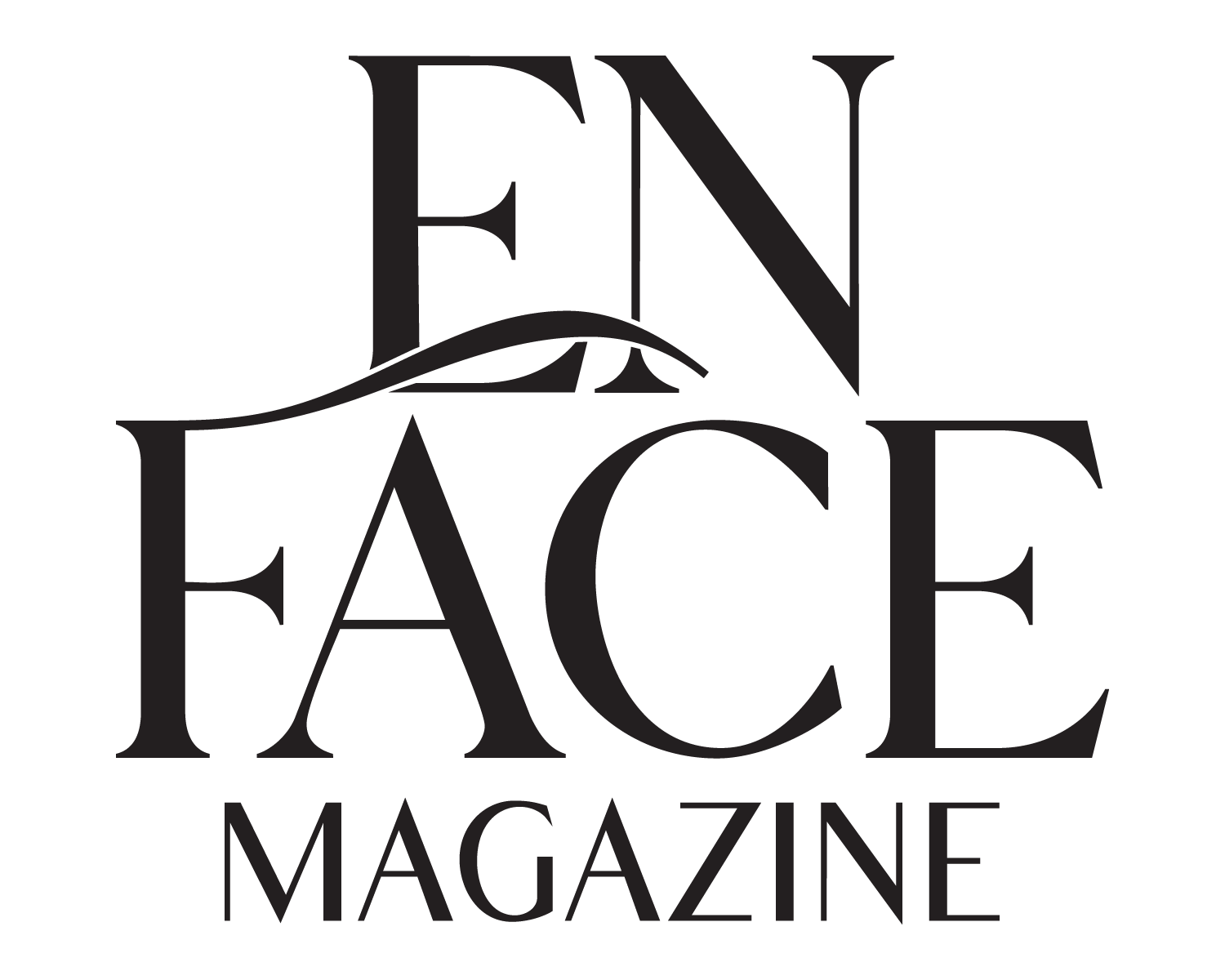
Alanna Love is a writer based out of Boise, Idaho. She revels in tracing the thread of beauty woven throughout daily life, especially when it is found in ballet, literature, or historical wardrobing.
Thomas Baker is a retired dancer living in Williamsburg, Brooklyn. He loves all things performance, art, and design.

Follow Us
Subscribe For Updates & Giveaways!
Stay up to date with exciting original content, upcoming performances, and giveaways unique to your community and beyond!
